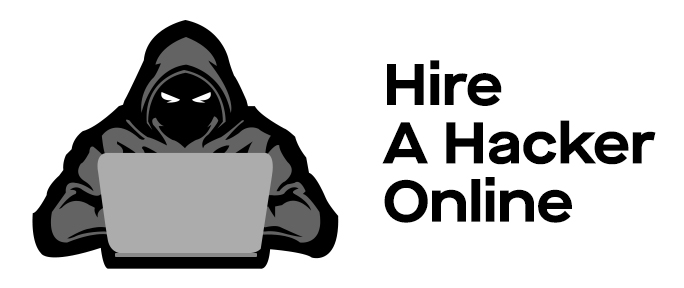A Content Removal Request is a formal request made to remove or delete specific content from a website, search engine, or social media platform. This request is typically made when the content violates privacy, copyright laws, or personal rights, or when it is deemed harmful or defamatory. The process usually involves contacting the platform or website hosting the content and providing justification for the removal, such as proof of damage or legal violations. Content removal requests are commonly used in cases of defamation, privacy violations, or when sensitive personal information is shared without consent.
Getting rid of online material can be hard and time-consuming. People and groups often face big problems when they try to remove hurtful, false, or illegal information. It may look easy, but removing material isn’t as easy as it seems because of the legal and technology issues involved. This piece talks about the biggest problems people and businesses run into when they try to get rid of online content.
The Growth of Bad Online Content
More people share their thoughts, ideas, and information on the internet as it grows. Still, not all information is good. It is now normal for harmful content like slander, abuse, and false information to spread. Harmful information that quickly spreads on websites and social media can hurt people and companies.
To keep people safe and protect their identities, harmful material needs to be taken down. But it’s not always easy to get rid of material online because of legal and technology issues.
Technical Problems with Content Removal
1. Duplicating Content
There are a lot of technology problems that make it hard to get rid of duplicate material. When something is put online, it’s easy to copy and share. If harmful material goes viral, it shows up on lots of different websites and channels. If you delete one post, copies of it might show up somewhere else.
For instance, a story that hurts someone’s reputation might be shared on several blogs or social media sites. It takes a lot of time to get rid of every instance of that piece. Because it is so easy to copy content, there is a never-ending circle that makes it almost impossible to get rid of all dangerous content on the internet.
2. Your privacy and fake accounts
Not being known is another problem. Many damaging posts are made by people who don’t give their names or who use fake accounts. Users can make pages on social media sites and groups without giving away their real names. Because people are anonymous, it is hard to find out where damaging information comes from.
The same person can make a new account and post the content again, even if it was taken down. This means that there is always a fight to remove damaging material from the web. It is hard to find private users or fake accounts and takes a lot of time.
3. The Internet’s global reach
Anyone in the world can connect to the internet. Its world reach is one of its strengths, but it also makes it hard to get rid of material. There are times when content that is okay in one country is not okay in another. There are different rules about what can be posted online in each country, which makes it hard to remove information around the world.
One website hosted in one country might not have to follow the same rules for taking down material as a website hosted in another country. If harmful material is taken down from one site, it might still be on others stored in places with different rules.
4. Giving search engines information
Harmful material may still show up in search engine results after it has been taken down from a website. Search engines save copies of web pages in a database called an index, like Google and Bing. If a search engine finds dangerous content, it may take some time to take it down from the search results.
Often, people and businesses need to make a separate request to search engines to get rid of bad information from their index. This makes the process of removing the information more complicated and slows the end result.
Legal Problems with Online Content Removal
1. Problems With Jurisdiction
Since the internet is used all over the world, it also causes legal problems. Law enforcement is one of the biggest problems. Getting rid of material is regulated by different rules in each country. For instance, rules about slander are very different from one country to the next.
It might be illegal for people or groups to take down harmful material shared on a website stored in a different country. It’s possible that they will have to deal with international justice systems or go to court in other countries. It can take a long time, cost a lot of money, and be hard to do these things.
2. Concerns About Censorship and Free Speech
Getting rid of material while still allowing free speech is another big legal problem. A lot of places have laws that protect free speech. Websites and social media apps often have their own rules to protect free speech. It is important to get rid of damaging content, but that shouldn’t mean limiting people’s freedom of speech.
Requests to remove material can be turned down if the site or court thinks that the content is protected speech. Free speech rules may protect things like views or criticisms that aren’t hurtful to others. This makes a legal murky area where material might be bad but is still protected by the law.
3. Rules for the Platform
Each website and social media site have its own rules about how to remove material. There are different rules for these, and they can change how quickly and easily information is taken down. Requests to remove content from some sites may be handled quickly, while on others it may take weeks.
Platforms may also choose not to delete content if it does not break their rules. People or companies that think the content is damaging may find this annoying. They have to follow the platform’s rules or go to court to get information taken down.
4. Lies and the Proof Burden
Defamation is one of the main reasons people ask for material to be taken down. However, it can be hard to prove slander in court. People who want to be removed have to prove their case in many countries. They need to show that the content is not true, is harmful, and is not covered by free speech right.
In court, it can take a long time to gather proof and prove slander. Taking legal action is hard for people and small groups because of the high costs involved. Additionally, if the content is shared secretly, it can make it even harder to figure out who is guilty.
For complex cases involving content removal, cybersecurity breaches, or online fraud, AITECHHACKS provides expert solutions to safeguard your digital presence.
Ways to Get Through Hard Times
Even with these legal and technical problems, people and groups can take steps to improve their chances of getting rid of damaging content.
1. Get help from experts
Getting help from lawyers or computer experts can make the process of removing information easier to understand. Lawyers with knowledge in internet law can help people figure out where they live and file removal requests with the right sites. Professionals in cybersecurity can help find private users or damaging content on a variety of platforms.
2. Use content removal services
A number of online sites remove material as their main business. These businesses help people and businesses by taking care of requests to remove content, working with platforms, and keeping an eye on the web for damaging content. There are services that can speed up the process and help get rid of material from as many places as possible.
3. Keep an eye out for copies
It’s important to keep an eye on the web for copies after damaging content has been taken down. You can find copies that have been shared again by regularly checking search engine results, social media sites, and other websites. People and groups can then act quickly before the damaging material spreads even more.
Final Thought
It is hard to get rid of online material because it is both technically and legally difficult. It’s easy to copy material, people can stay anonymous, laws vary from one jurisdiction to another, and concerns about free speech all cause big problems. But people and groups can get through these problems if they use the right tactics. It is possible to lessen the effects of dangerous online content by working with professionals, using content cleanup services, and being careful.
Sources:





